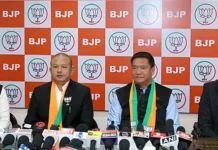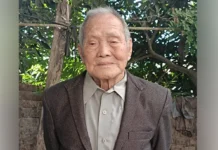Flights Of Fantasy
[ M Panging Pao ]
Many Arunachali old-timers recall the 1962 Sino-India conflict with fear and anger. The Chinese forces entered deep into Arunachal Pradesh along many axes like Taksing-Limeking, Mechuka/Manigong-Tato, Gelling-Tuting, Kibithoo-Walong axes and the main Tawang-Bomdila-Rupa axis. Many readers are not aware of fierce battles fought by our brave soldiers. One such story is the story of Havildar Govind Kamble.
Havildar Govind Kamble hailed from Thane in Maharashtra; he belonged to the 7 Mahar Regiment and was placed under the operational command of a company of the Sikh Light Infantry, which was deployed on the forward slopes of Sela in Tawang district of Arunachal Pradesh during the Sino-India war of 1962.
Havildar Govind Kamble was placed in command of a medium machine gun section placed under the operational command of a company of the Sikh Light Infantry on the forward slopes of Sela in NEFA to cover the withdrawal of a battalion of the Garhwal Rifles. During the second phase of the war, on 18 November, 1962, the Chinese launched a massive attack this company position with superior numbers supported by mortars and machine guns. Waves of Chinese attacks were repulsed by the tenacious Indian troops.
However, the Chinese forces continued their attack and the battalion area located forward of their position had partially fallen to the enemy. Havildar Kamble moved from trench to trench, motivating and encouraging his soldiers, completely disregarding enemy fire and his own safety.
While doing so, he was hit by mortar splinters in both legs and was unable to use them. Despite both his legs being injured and unusable, he dragged himself into one of the machine gun trenches and started firing the machine gun at the enemy soldiers to slow their advance. By this time the company was ordered to withdraw. Havildar Kamble told his men to withdraw to safety while he continued to give them covering fire to enable them to disengage from the enemy and withdraw. He kept firing the machine guns till he succumbed to his injuries and was martyred.
Throughout the entire battle, Havildar Govind Kamble displayed the highest sense of duty, leadership and courage in the best traditions of the army. For his exceptional courage, tenacity and gallantry during the war, Havildar Govind Kamble was awarded the third highest gallantry award of the nation, Vir Chakra, posthumously. Salute to Havildar Govind Kamble! (The contributor is retired Group Captain, Indian Air Force)




